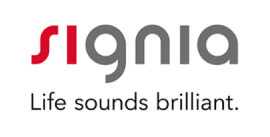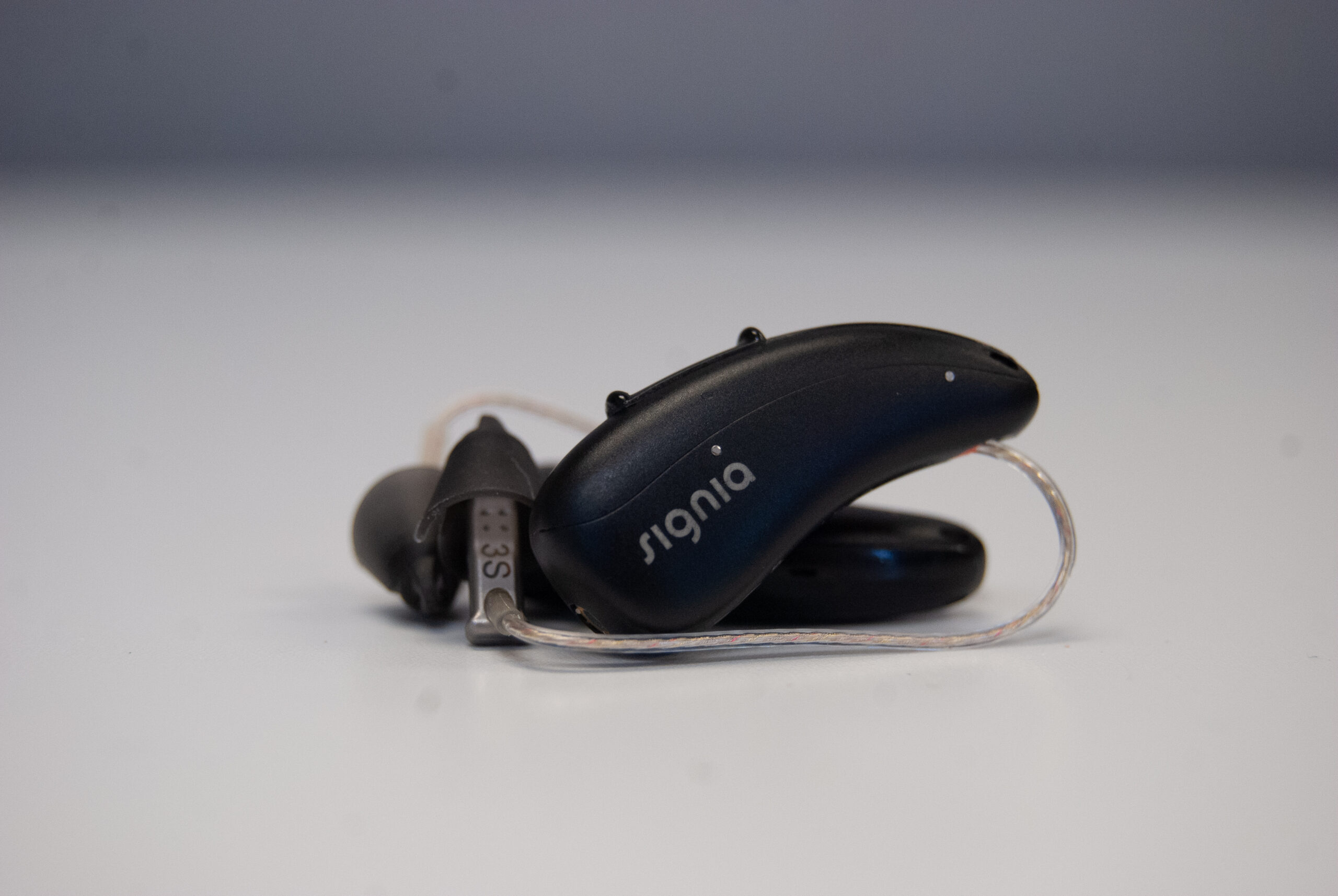Types of Hearing Aids
There are several different types of hearing aids. The particular style that might be best for you depends on the type and severity of hearing loss that you have. You and your provider will discuss what devices are most appropriate for you. Here are the different types of hearing aids that we fit:
Receiver In Canal (RIC)
The RIC is a smaller device that sits behind the ear. A thin wire connects the hearing aid to the speaker that sits inside the ear canal. RICs are appropriate for most types of hearing loss. They come in rechargeable options and can often connect to different smart devices via Bluetooth.
Behind The Ear (BTE)
Like the RIC, BTEs sit behind the ear but are larger. A clear tube connects the hearing device to a custom earmold or dome in the ear canal. The BTE has the same features as the RIC but can provide more power based on its larger size. Also, with the custom earmold option, a proper fit is guaranteed, and it is less susceptible to moisture damage.
Completely in the Canal (CIC) and Invisible in the Canal (IIC)
These are the smallest custom instruments available. They are best fit for a mild to moderate hearing loss. While their size makes them discrete, it also limits capabilities such as directionality and manual controls on the devices.
In The Canal (ITC)
ITC hearing aids are another custom option that is slightly larger. They sit securely in the lower portion of the bowl of the ear. Its size makes it easier to insert and remove. They have slightly longer battery life and have more capabilities such as directional microphones and the option to add manual controls such as a push button or volume wheel.
In The Ear (ITE)
ITE hearing aids are the largest type of custom hearing aids. They come in either a half shell that fills half of the bowl of the ear or a full shell that fills almost the entire outer bowl of the ear. Their size allows them to be fit for more severe hearing loss and capability for Bluetooth can be possible. There are now some custom ITE instruments that are available in rechargeable options as well.
CROS/BiCROS
CROS and BiCROS systems are designed for people who have very little to almost no hearing in one of their ears. CROS stands for “contralateral routing of signals”. The CROS device is a transmitter that picks up the sound that is present on the side of the wearer’s bad ear and sends that signal to a hearing aid that is worn on the other side. This allows the person to hear everything that is occurring on both sides. The BiCROS system works the same way, but it is created for someone who has some hearing loss in the better ear as well. The hearing aid that receives the signal is programmed to provide amplification that is needed on that side.
Manufacturers We Work With














